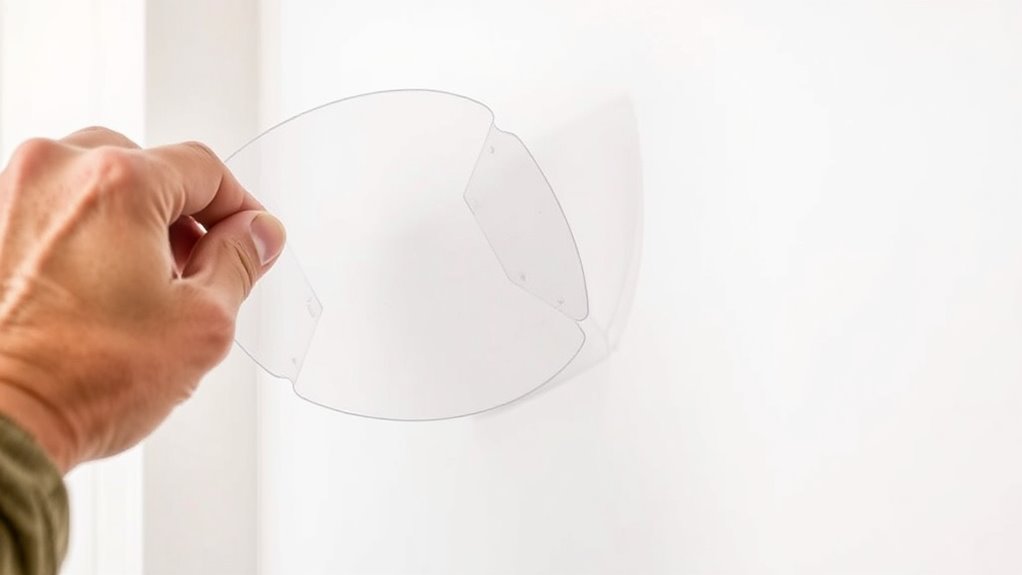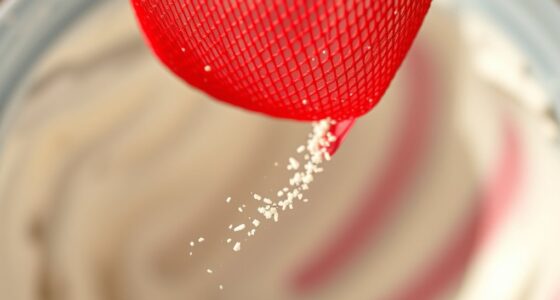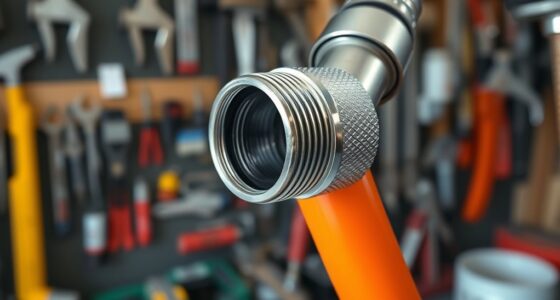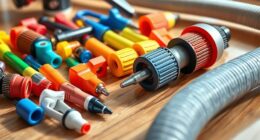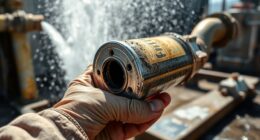To safeguard surrounding surfaces while spraying, set up overspray shields like plastic sheets or adjustable barriers carefully around your work area. Make sure they are securely placed and free of tears or holes. Use tape for extra protection on edges. Always keep shields in place during spraying and double-check their position before starting. Following these steps helps contain overspray effectively and ensures a clean finish. Keep going to discover more tips for safe and efficient spraying.
Key Takeaways
- Assess the work area to identify surfaces needing protection before setting up overspray shields.
- Position and secure shields firmly to prevent shifting during spraying.
- Use tape along edges and corners to add extra protection and seal gaps.
- Ensure shields are free of holes or tears to effectively contain overspray.
- Regularly inspect and adjust shields to maintain coverage and prevent overspray escape.
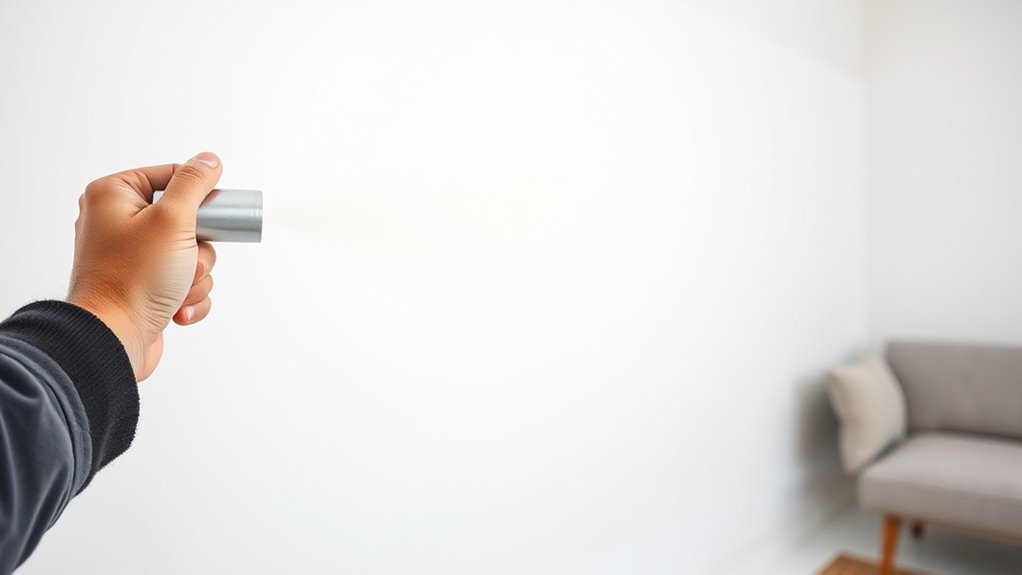
Overspray shields are essential tools that help you protect surrounding surfaces from unwanted paint or coating drift. When you’re about to start a painting project, proper paint preparation is crucial, and using overspray shields is a key part of ensuring your work remains neat and professional. Before you even pick up a brush or spray gun, take the time to set up your shields correctly. This will not only save you time cleaning up afterward but also prevent accidental damage to furniture, walls, or flooring. Remember, safety guidelines should always be your top priority. Wearing protective gear, working in well-ventilated areas, and using shields effectively help minimize health risks associated with paint fumes and overspray.
To begin, assess the area you’re working in. Identify surfaces that need protection and determine the best placement for your overspray shields. These can be simple plastic sheets, specialized spray booths, or adjustable shields designed for specific tasks. Attach or position them firmly to prevent any shifting during painting. When you’re using spray equipment, overspray can travel further than you expect, so double-check your barriers before you start. Proper paint preparation also means ensuring your workspace is organized, with everything you might need within reach, so you don’t have to move around unnecessarily once you begin spraying. This reduces the risk of knocking over shields or creating accidental overspray. Additionally, choosing the right tip size for your spray gun can significantly influence how much overspray occurs during application.
Using overspray shields correctly involves maintaining a steady hand and consistent spray pattern. Always follow the manufacturer’s safety guidelines for your equipment, including recommended distances and spray angles. If you’re working on large or complex surfaces, consider taping off edges and corners to complement your shields. This layered approach provides extra protection and keeps your work clean. Keep in mind that safety guidelines also include avoiding excessive overspray, which can be hazardous to you and others nearby. Use masks and goggles, especially when spraying in enclosed spaces, and ensure your shields are free of holes or tears that could allow overspray to escape.
Frequently Asked Questions
Are Overspray Shields Reusable or Single-Use?
Overspray shields are generally reusable, making them a cost-effective choice for your projects. You can clean and reuse them, which reduces waste and minimizes environmental impact. Reusing shields not only saves money over time but also supports eco-friendly practices. Just verify you clean them properly after each use to maintain their effectiveness. This way, you get the benefits of both cost efficiency and reduced environmental footprint.
What Materials Are Best for Overspray Shields?
You should choose overspray shields made from durable materials like polycarbonate or heavy-duty plastic, as they offer excellent material durability and withstand paint splatters and cleaning. These shields allow for shield customization, fitting different surfaces and project sizes easily. Reusable shields made from sturdy materials save you money and time, ensuring reliable protection throughout multiple projects while maintaining their shape and effectiveness.
How Do I Clean Overspray Shields After Use?
To clean overspray shields after use, start by wiping off excess paint with a cloth or paper towel. Then, apply a gentle cleaning solution like soapy water or a suitable solvent based on the paint type. Use soft brushes or scrubbing pads for stubborn spots. Rinse thoroughly with clean water and dry completely. Regular cleaning techniques like this guarantee proper product maintenance and keep your overspray shields in good condition for future use.
Can Overspray Shields Be Used Outdoors?
Yes, you can use overspray shields outdoors, but make sure they’re weather-resistant for outdoor protection. Look for shields made from durable, waterproof materials that withstand rain and sun exposure. This guarantees your surfaces stay protected during outdoor projects. Keep in mind that regular cleaning and maintenance help the shields last longer, maintaining their effectiveness in outdoor conditions. Properly selecting weather-resistant overspray shields makes outdoor work cleaner and more efficient.
Are There Size Options for Different Projects?
They say, “size matters,” and that’s true for overspray shields too. You’ll find a variety of shield size options to match your project size considerations, whether you’re tackling small touch-ups or large surfaces. Choosing the right shield size options guarantees you stay efficient and precise. Always measure your project area first, so you select a shield that’s just right, preventing overspray and saving time.
Conclusion
Think of overspray shields as your trusted guardian in a bustling marketplace. Just like a vigilant watchman protects precious goods from stray arrows, these shields keep your surrounding surfaces safe from unintended paint splatters. By using them, you’re not just preventing messes—you’re safeguarding the beauty and integrity of your space. Embrace this simple tool, and you’ll find that with a steady shield, your work becomes a masterpiece, free from the chaos of overspray.
